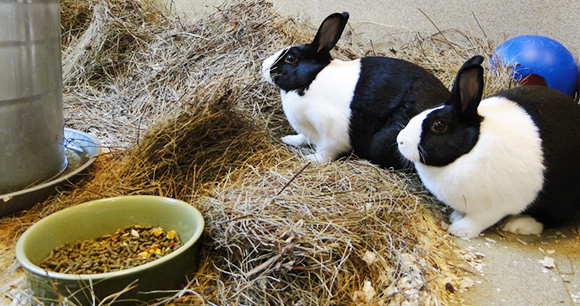
Research must not be conducted on animals unless, at minimum, the research is planned and executed in accordance with the principles of the “3Rs” (replacement, reduction, refinement) of Russell and Burch (1959, reprinted in 1992), and includes the following:
- The animals must be maintained in an optimum, species-appropriate environment.
- The animals must be under the care of professionally trained, compassionate personnel.
- The animals’ pain, discomfort, fear, and distress must be prevented or at least minimized by considerate and scientifically sound experimental design and appropriate use of anesthetic, analgesic, and tranquilizing drugs.
Detailed Position
- If an equally effective and legally acceptable nonanimal alternative is available, it must be used in preference to an experiment or test conducted with an animal.
- Experiments must be appropriately designed to generate robust, reliable, and reproducible results in order to reduce the total number of animals used for research. This includes engaging in practices such as blinding and randomization where possible, conducting appropriate power analyses and statistical tests, and transparently reporting detailed methodology in scientific journals, including animal housing conditions, bedding type, enrichment, refinement, and details of supportive or analgesic care (see PREPARE and ARRIVE guidelines).
- After efforts have been made to replace or reduce animal use, institutions must refine research methodology and husbandry practices to minimize animal pain and distress. These efforts should be supported and funded by both the funding agencies and the research institution’s administration.
- Housing for animals in research must provide sufficient space and materials to permit the expression of basic species-specific behaviors, including species-typical walking and stretching, foraging, retreating to a safe/sheltered place, burrowing and gnawing (rodents), climbing, perching and swinging (nonhuman primates), perching and scratching (birds), and rooting and wallowing (pigs). Social animals should be housed with one or several compatible conspecifics to address their biological need for companionship.
- Professional staff must be available at all times—day and night, weekends, and holidays—to care for the animals. The staff must make rounds for the purpose of ascertaining the state of each animal’s health and well-being. The staff must be trained and authorized to dispense pain-relieving or tranquilizing drugs as may be necessary. While it may be a standard operating procedure to phone the investigator or director regarding such events, this action must not delay the provision of relief for the animal. Nursing care must be provided to all animals following surgery or other injurious interventions and to animals with chronic pathological conditions.
- Staff must be compassionate and well trained. Ongoing training regarding best practices must be provided. The staff must be observant and empowered to make their observations known to the director of the laboratory, veterinarian, or another trained individual duly authorized to make animal welfare or humane endpoint decisions. For example, a moribund animal should be euthanized. An animal who is suffering should be—depending on the situation and the nature of the work—anesthetized or sedated and given supportive care such as fluids, soft food, and custom bedding or otherwise treated to alleviate suffering, or the animal should be euthanized.
- Before the start of any experiment, animals should be habituated to humans, routine husbandry procedures, and the specific experimental procedures they will experience during a study. Animals should be trained to cooperate with husbandry and other procedures using positive reinforcement to minimize restraint and stress-related injuries and mistakes.
- If an animal is subjected to surgery from which he or she is expected to survive, a pre-planned pain evaluation and management schedule must be developed. This schedule must account for overnight and weekend hours. The pain evaluation must include behavioral or physiological measures of comfort level or pain. Staff must ensure adequate and timely administration of pain-relieving medications until the animal has recovered and is no longer likely to be experiencing pain or exhibiting signs of discomfort.
- Any experiment or test that inflicts trauma should be conducted with a fully anesthetized animal. If the procedure causes life-threatening injury, the animal should be euthanized following the procedure and before regaining consciousness.
- Euthanasia must be considered a major responsibility. Staff carrying out euthanasia must be well trained, efficient in performing the procedure, and empathetic to the animals. The primary concern must be the animals. The location for conducting the euthanasia should be selected so as not to increase anxiety and fear. The method of euthanasia that is selected should ensure the least pain and distress. No animal should be disposed of until death is ascertained and irreversible.
- The great majority of animals in experimentation and testing are purposely bred for sale to research facilities. This is the preferred method of acquiring animals. These animals must be raised in facilities whose standards of housing and care are equal to or better than those described herein for research laboratories. Following the legally mandated waiting period, dogs and cats at municipal pounds may be donated to veterinary schools that conduct surgical training to perform spays, neuters, or other treatments intended to facilitate adoption of the animals.
- Animals should be permitted to retire after termination of their assignment(s) to research, testing, and education. The funding agency and research institution should earmark funds for the life-long retirement of these animals.
- Only noninvasive research of direct benefit to the species’ own survival may be conducted on threatened or endangered species.